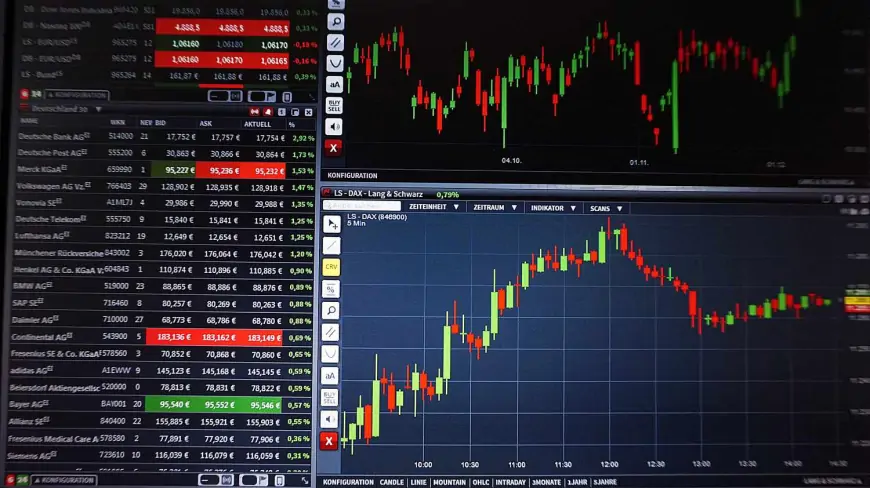How to trade Forex: A beginner's guide
Learn about forex trading: types of markets, strategies, and risks involved. Discover how to start trading currencies and manage risks effectively.

The forex market, also known as the currency market, is the world's largest and most liquid market where currencies are exchanged. It facilitates global transactions ranging from travelers exchanging money to international financing. With daily trading exceeding $7.5 trillion, it significantly impacts global consumers by influencing the prices of imported and exported goods. Most trading involves the seven major currency pairs, all including the U.S. dollar (USD), and participants range from governments and banks to corporations and individuals. Trading operates continuously 24 hours a day, shifting between global trading centers.
How to trade Forex
Trading in the foreign exchange (forex) markets involves exchanging one currency for another with the aim of profiting from fluctuations in exchange rates. To start trading forex, you must open a trading account with a broker and deposit funds. Using the broker's trading platform, you can place buy or sell orders for currency pairs based on real-time pricing and chart data. Successful forex trading requires developing a strategy considering market conditions, news, and technical analysis. Trades are typically sized in lots, with each standard lot representing 100,000 units of the base currency. Traders use technical and fundamental analysis to assess market movements and manage risk with stop-loss orders and proper position sizing. While challenging, forex trading can be profitable with knowledge and discipline.
Steps to start trading Forex
Getting started with forex trading is straightforward, similar to setting up a traditional stock trading account but with some distinctions:
- Research and choose a broker: Begin by selecting a forex broker that meets your criteria for platform features, regulatory compliance, fees, margin rates, and customer support. Consider reputable options highlighted in resources like Investopedia's forex broker reviews.
- Open a Forex trading account: Provide personal details such as name, address, tax ID number, and financial background. You'll also need to outline your financial situation and investment goals to comply with "know your client" regulations. Opening an account involves executing a margin agreement due to leverage in forex trading. Additionally, if trading currency options, an options agreement is required, available through OTC options or exchange-traded options on currency futures.
- Verify your identity: Confirm your identity using a passport, driver's license, or national ID. A utility bill or bank statement may be requested to verify your address. This information is necessary to comply with U.S. government regulations and the rules of the Commodity Futures Trading Commission (CFTC).
- Fund your Forex account: After your account approval, deposit funds to begin trading. Some platforms allow starting with as little as $100, leveraging up to 50:1, enabling positions up to $5,000. Funding options include ACH bank transfer, wire transfer, debit card (post-verification), or check.
- Research currencies and identify trading opportunities: Once funded, traders select currency pairs and use technical analysis to determine entry and exit points. Proper trade sizing and management are crucial for capital preservation and growth in leveraged markets like forex.
- Determine trade size: Before trading, understand available leverage (up to 50:1) and calculate risk. Many new traders follow the 1% rule, risking only 1% of their total account on any trade, though some may risk 2% or 5% per trade.
- Monitor and manage your position: After entering a trade, monitor it closely with predefined exit points for profit-taking or stop-loss. Consider using one-cancels-the-other (OCO) orders to automatically execute these actions based on price movements.
Opening a Forex account: Requirements and process
To start a forex account with a broker, you need to provide personal details and fund the account:
- Account setup: Begin by creating an account with basic information like email and password.
- Personal details: Provide your full name, date of birth, contact information (address, email, phone).
- ID verification: Submit a government-issued ID (driver’s license, passport) to confirm identity.
- Proof of address: Submit a bill or bank statement displaying your name and address.
- Know Your Client (KYC): Answer questions about occupation, income, trading experience, and risk tolerance.
- Financial information: Provide bank account details for funding your forex account through transfers.
This process ensures compliance with regulatory requirements and facilitates your entry into forex trading.
Types of Forex markets
To begin trading foreign exchange, understanding the market varieties is essential. Forex markets include spot, forward, and futures trading.
Spot Forex market
Spot forex involves direct currency exchange at current market rates, settling typically two days after the trade date. USD/CAD is an exception, settling within one day.
Forward Forex market
Forward forex contracts are agreements to exchange set currency amounts on future dates, influenced by interest rate variances. It allows hedging specific risks for specific periods, like securing a future exchange rate for payroll.
Futures Forex market
Futures forex contracts trade on regulated exchanges with fixed terms, cash-settled in US dollars. Unlike forwards, they lack flexibility for hedging specific dates and amounts.
Is Forex trading challenging?
Trading in the foreign exchange markets shares similarities with other markets and has its own set of advantages and challenges. Like all trading, forex involves buying or selling assets and managing risk through strategic stop-loss and profit-taking levels. Forex, akin to futures markets, is known for its rapid movements and volatility. It utilizes margin leverage, allowing traders to control larger positions with a fraction of the capital, which can amplify both gains and losses. To navigate these dynamics, traders must rigorously manage risk, sizing positions appropriately, and employing disciplined risk-management strategies, including stop-loss orders.












































